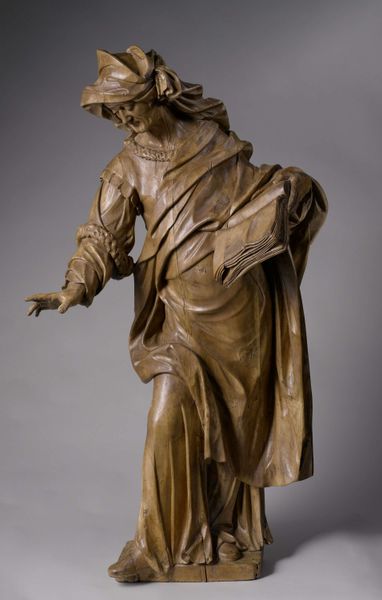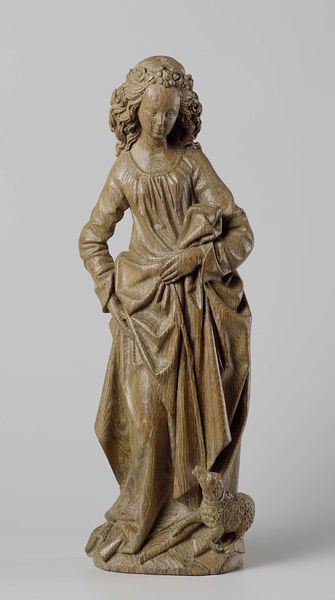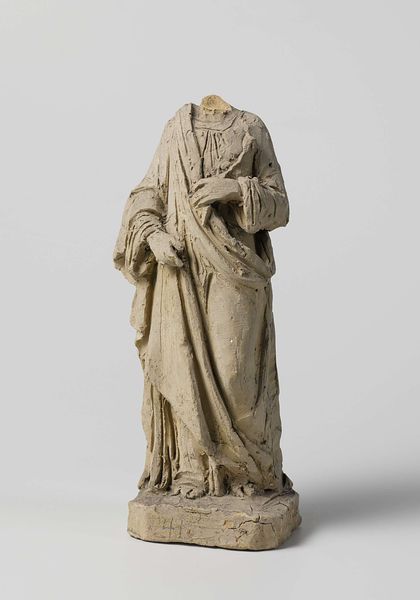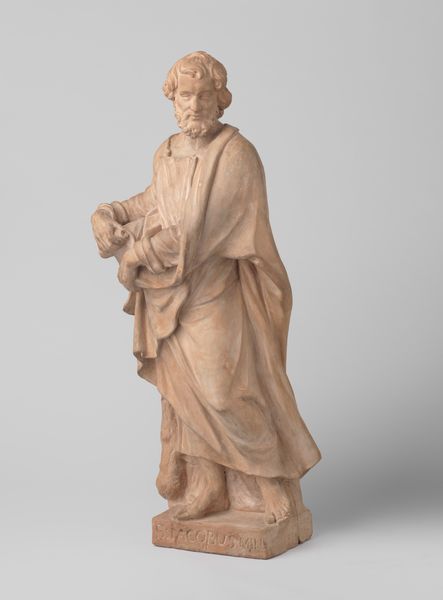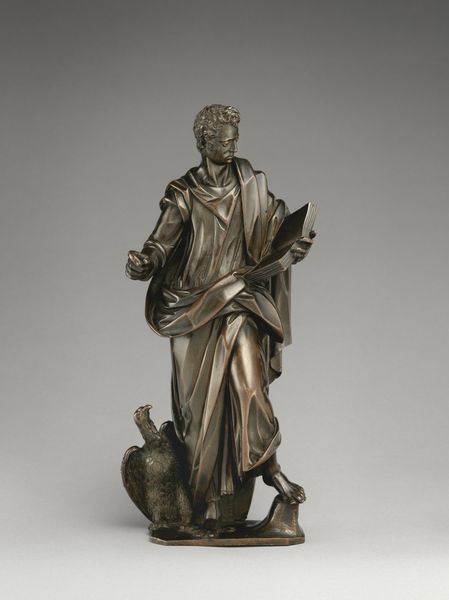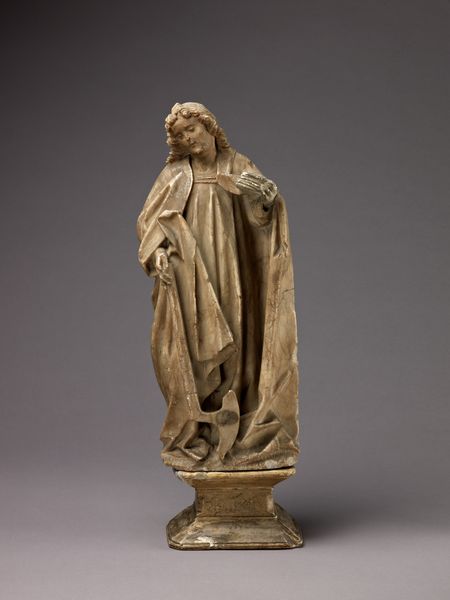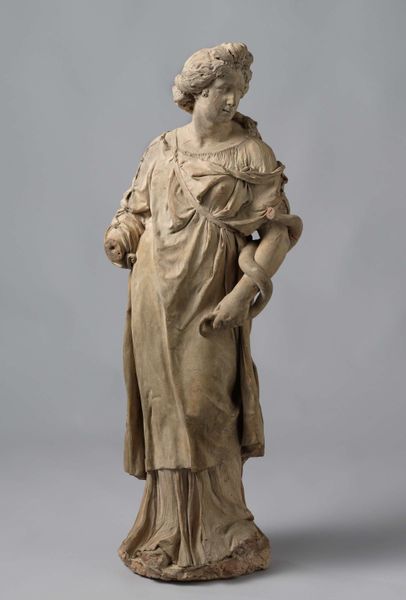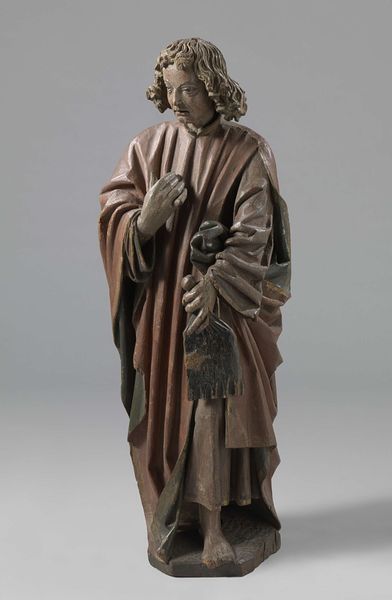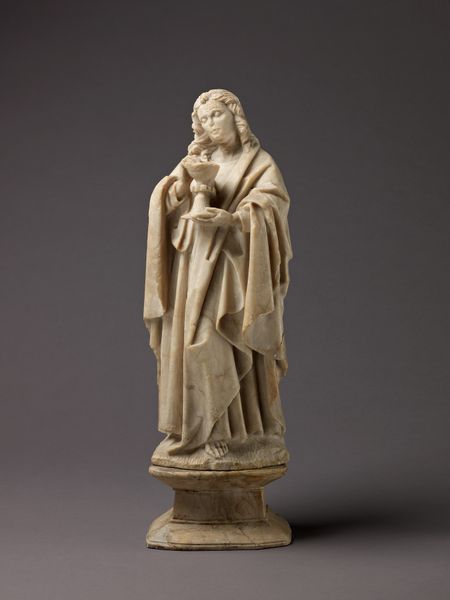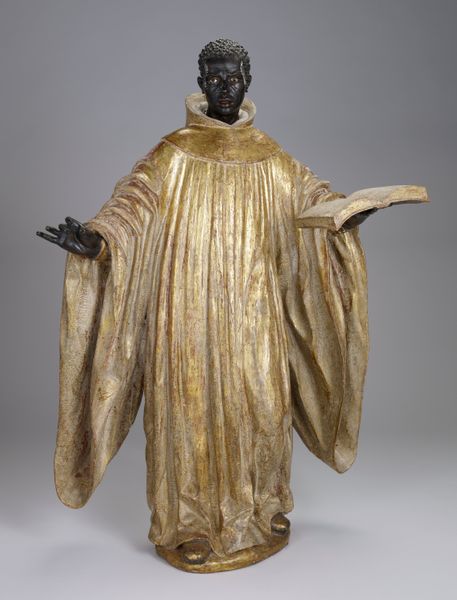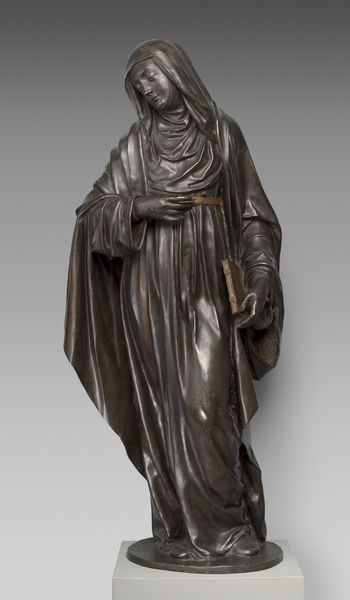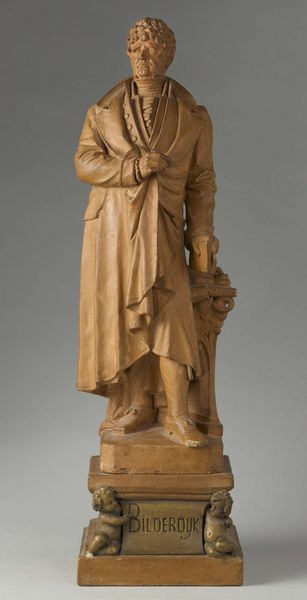
sculpture, wood
#
portrait
#
medieval
#
sculpture
#
gothic
#
figuration
#
sculpture
#
wood
Dimensions: height 103.5 cm, width 32 cm, depth 23 cm
Copyright: Rijks Museum: Open Domain
Editor: Here we have "The Virgin and Saint John the Evangelist" sculpted by Arnt van Tricht around 1540-1545. It's a wooden sculpture, and it's interesting to see a religious scene rendered so plainly, almost like a genre scene. What do you make of its simplicity? Curator: That "simplicity," as you call it, is highly constructed. Think about the audience for devotional images like this in the 16th century. The patronage of the church was starting to fracture because of reformist movements. This plainer style may be a deliberate attempt to reach a broader audience, avoiding the excesses that were criticized by reformers. How do you think this sculpture would have been displayed, and who do you think it was for? Editor: It would likely have been placed in a church. Maybe its muted palette suggests a shift away from the overly ornamented altarpieces toward personal devotion. What are your thoughts on its physical setting? Curator: Precisely. Think about its accessibility within that space. Was it intended for private devotion within a side chapel, perhaps funded by a guild or a wealthy family? Or, positioned more publicly, was it used to convey a broader message, aimed to guide the faith of a wider population increasingly influenced by shifting religious ideas? Its existence becomes part of that dialogue. Editor: That makes sense. Considering where and how people saw this changes how we see its meaning. Curator: Exactly! The location dictates its reception, and vice-versa. Editor: It’s interesting to consider how the political and religious context shapes something seemingly static, like a sculpture. Curator: Yes, understanding the art world – and the world around it – during the time that artwork was made allows for a far richer experience!
Comments
rijksmuseum about 2 years ago
⋮
These two statues originally stood underneath a large sculpture of the crucified Christ. The Virgin bows her head in sorrow, while the expressive gaze of the young apostle John, Jesus’s favourite, is directed upwards to the right. Large sculpture groups such as this were normally placed high up on the screen that separated the chancel from the nave of the church.
Join the conversation
Join millions of artists and users on Artera today and experience the ultimate creative platform.
